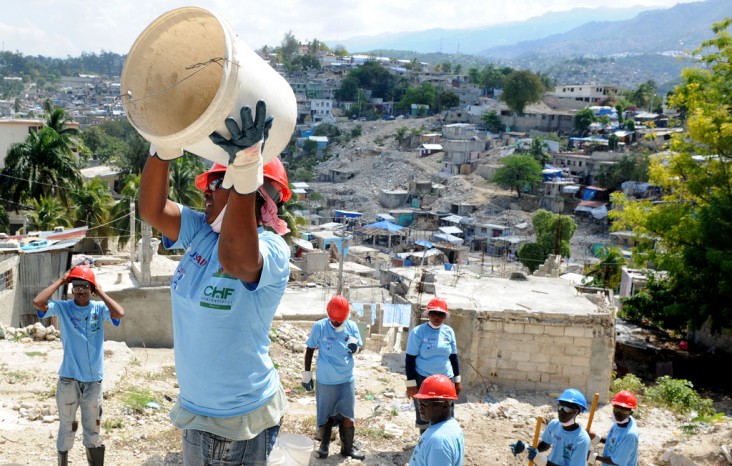
For Immediate Release
PORT-AU-PRINCE, HAITI - In a ceremony yesterday, the U.S. government, along with partners CHF International and Project Concern International (PCI), and a representative from the Haitian government, marked the conclusion of the Katye project. The project comprehensively rehabilitated the neighborhood of Ravine Pintade in Port-au-Prince, which was heavily damaged by the January 2010 earthquake. Through an $8.5 million grant from the U.S. Agency for International Development's Office of U.S. Foreign Disaster Assistance (USAID/OFDA), the residents of Ravine Pintade worked with CHF, PCI, and others to clear rubble, repair houses, construct transitional shelters, stabilize slopes, rehabilitate sanitation and drainage infrastructure and footpaths, and redesign public spaces for better safety, access, and disaster risk mitigation.
"The completion of this project marks a new beginning for the people of Ravine Pintade," said U.S. Ambassador to Haiti Kenneth H. Merten. "The Katye project was much more than removing tons of rubble, repairing or building shelters, and providing clean water and other basic infrastructure. Working alongside the people who live in the community, we rebuilt a neighborhood."
Key to the project's success was the integrated nature of its activities, including extensive community engagement and a commitment to upgrading all aspects of the neighborhood for the common good. The Katye project helped residents re-establish their pre-earthquake economic and social structures. Working with maps and plans that the community helped develop, residents and USAID's partners:
- Removed 35,000 cubic meters of rubble;
- Repaired or constructed shelter for 620 households;
- Built more than 2.5 km of retaining walls to stabilize the landscape;
- Built more than 2 km of underground storm drainage;
- Installed five community water points;
- Improved sanitation through installation of toilets and septic systems;
- Installed rainwater harvesting systems on shelters; and
- Built or rehabilitated footpaths, stairs, footbridges, streets, and lighting.
To help make this project possible, residents of Ravine Pintade agreed to redraw their own property lines to accommodate the redesign of access paths and other public spaces for improved access and circulation. In addition, households are sharing innovative two-story transitional shelters to make better use of available land.
Through this "neighborhood approach" - which focuses on all aspects of a neighborhood that need repair and is dependent on a highly consultative planning process that reflects residents' needs, preferences, expectations, and knowledge - the Katye project helped displaced residents return home to a neighborhood they had improved through their own efforts. As the U.S. government's long-term commitment to helping the people of Haiti build a better future continues, other neighborhood rehabilitation and reconstruction projects in Port-au-Prince can look to the Katye project as a model for rebuilding communities on a sounder footing.
Read more about USAID's work in Haiti: http://haiti.usaid.gov







Comment
Make a general inquiry or suggest an improvement.